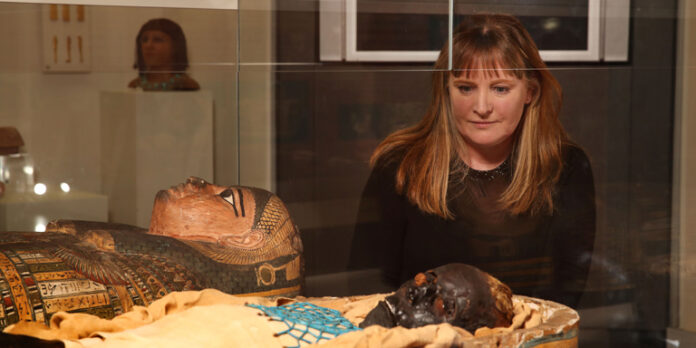Takabuti was a young Theban woman who lived during the end of Ancient Egypt’s 25th Dynasty, around 755-656 B.C. She was the daughter of Nespara, a Priest of Amun, and Tasenirit. Believed to have been married, Takabuti resided in Thebes, holding esteemed titles that were inscribed on her coffin in hieroglyphs: “Mistress of a Great House” and “Noblewoman.”
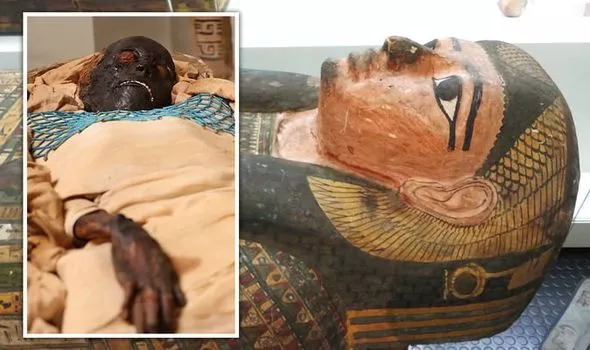
Discovery and Initial Examination
In 1834, Thomas Greg of Ballymenoch House, Holywood, Co. Down, purchased Takabuti’s mummy, which had been buried in a cemetery in Western Thebes. On January 27th, 1835, the mummy was unwrapped and studied for the first time at the Belfast Natural History Society’s museum. Irish Egyptologist Edward Hincks played a crucial role in this initial study, deciphering the hieroglyphs on her coffin and confirming her titles.
Modern Analysis and Revelations
Advanced Techniques in the Study of Takabuti’s Mummy
On the 185th anniversary of the unwrapping of Takabuti’s mummy, results from a modern study were made public. This study involved x-rays, C.T. scanning, hair analysis, and radiocarbon dating. Conducted at Kingsbridge Private Hospital, the team included experts like Professor Rosalie David, Dr. Bart van Dongen, Dr. Konstantina Drosou, Dr. Sharon Fraser, Professor Tony Freemont, and others from The University of Manchester. Their findings provided fascinating insights into Takabuti’s physical health and revealed peculiarities about her.
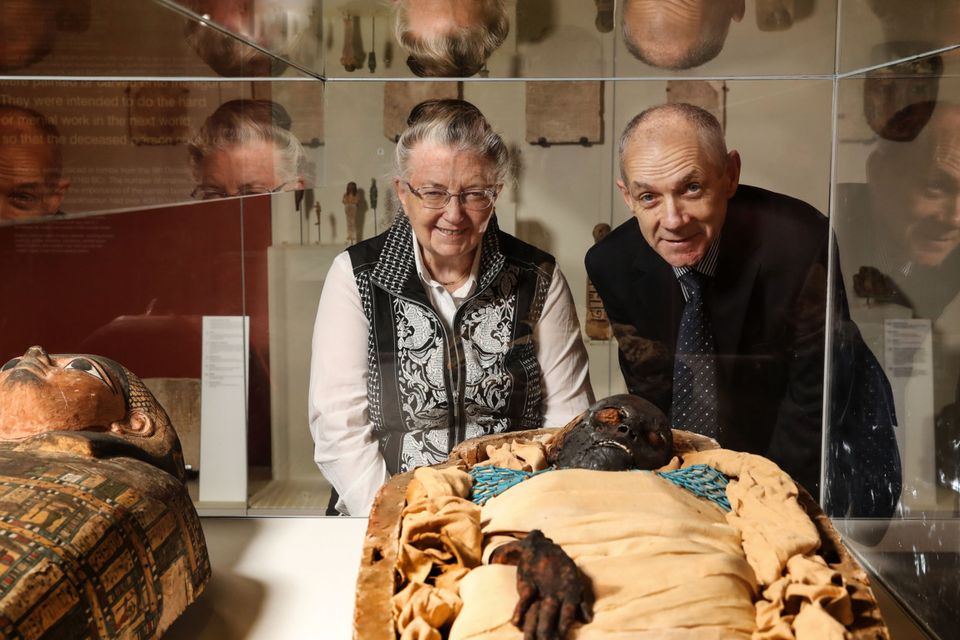
Significant Findings
One of the most remarkable discoveries was that Takabuti’s heart, initially thought to be missing or incorrectly packed, was actually perfectly preserved within her chest. This finding corrected a misconception held by 19th-century Egyptologists. In Ancient Egyptian belief, the heart was the soul’s residence and essential for the afterlife, so its preservation was crucial.
Unique Physical Traits and Genetic Footprint
X-rays revealed that Takabuti possessed an extra adult tooth, a trait found in only 0.02% of the population. While adults typically have 32 teeth, Takabuti had 33. Additionally, her genetic footprint, identified as H4a1, is relatively rare and has not been found in any ancient or modern Egyptian population, suggesting unique migratory patterns to and from Ancient Egypt.
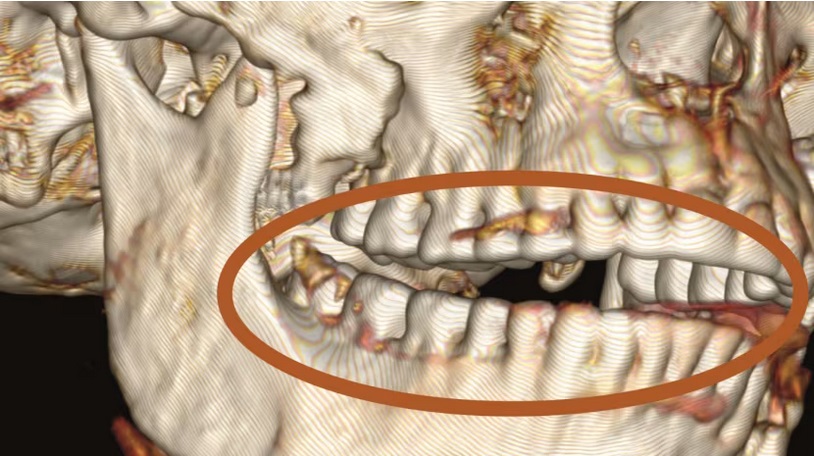
The Tragic Death of Takabuti
The modern analysis unveiled a grim aspect of Takabuti’s story: she was a victim of murder. Evidence showed that she had been stabbed in the back, possibly by an axe. The CT scan revealed a severe wound to her upper left chest wall, which likely caused her rapid death. Dr. Roger Forshaw, who performed the CT analysis, emphasized the severity of the wound and its fatal impact.
Professor Eileen Murphy from Queen’s University Belfast remarked on the contrast between Takabuti’s peaceful appearance in her coffin and the violent nature of her death. This poignant revelation added a tragic dimension to her story.
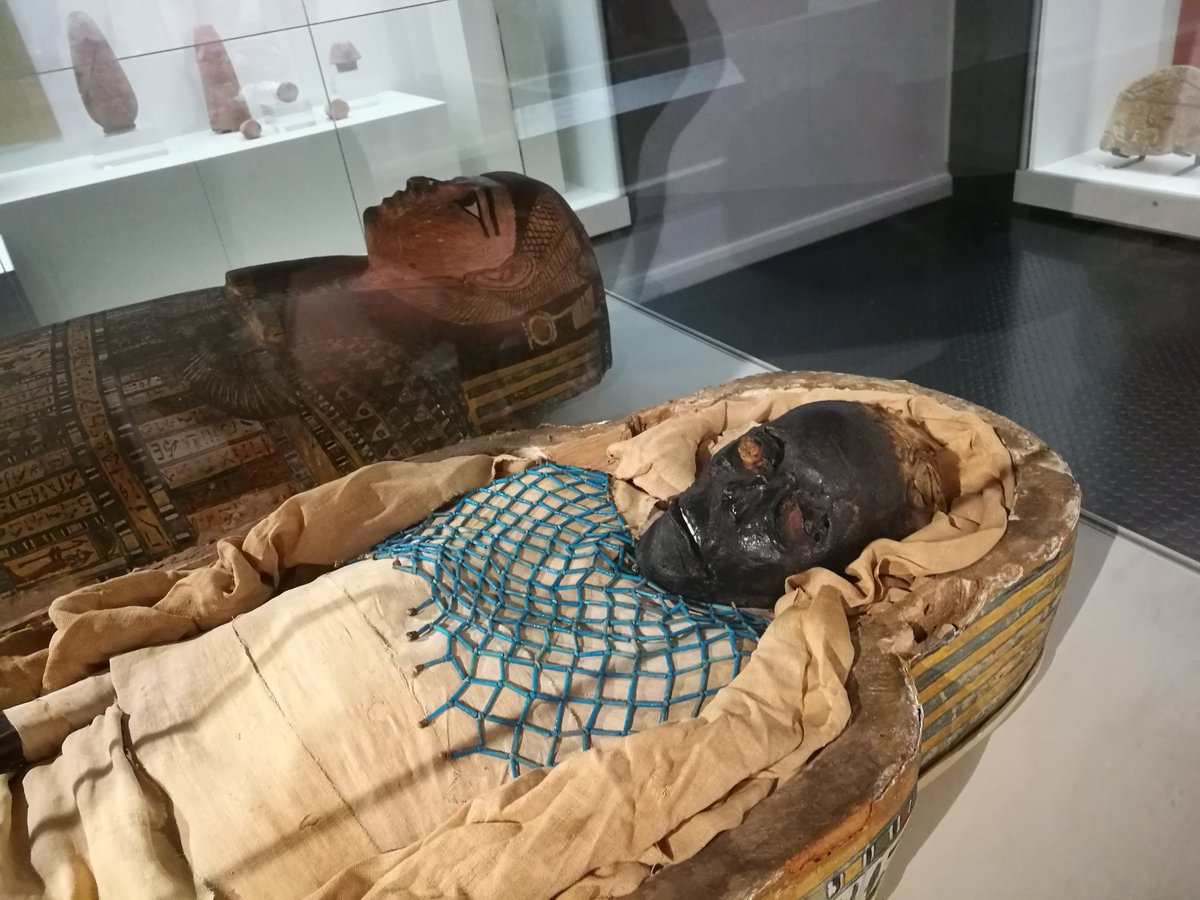
Takabuti’s Legacy
Takabuti has been a prominent Ancient Egyptian icon in Ireland, displayed at the Ulster Museum for over a century. Her story, enriched by modern scientific techniques, offers a deeper understanding of her life, death, and the historical context of her time.
Conclusion: A Journey Through Time
The study of Takabuti exemplifies how advanced scientific methods can reveal new information about individuals from the distant past. Professor Rosalie David highlighted the importance of these findings, noting how they contribute to our broader understanding of Ancient Egyptian history and Takabuti’s unique place within it. This comprehensive study serves as a testament to the enduring fascination and continual discoveries surrounding ancient civilizations.
